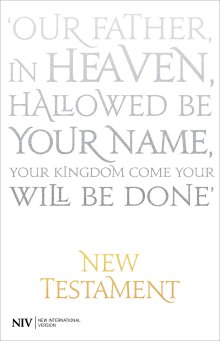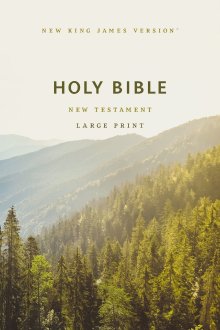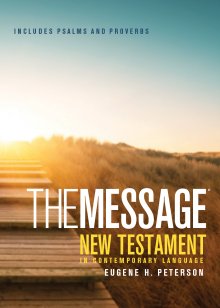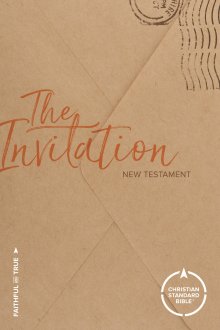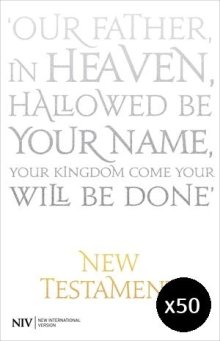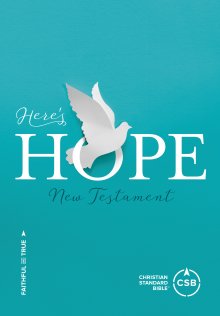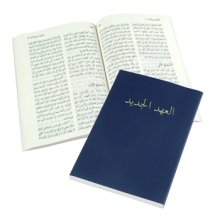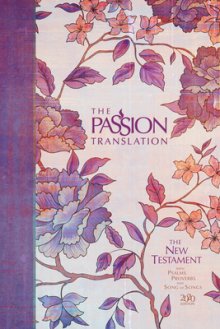What’s the Difference Between the Old and New Testament? A Beginner’s Guide
The Editor

When you first open a Bible, one of the first things you’ll notice is its major division into two sections: The Old Testament and the New Testament.
To a new reader, this can be a bit confusing.
Is one more important than the other? Do you need to read both?
Are they two completely separate stories?
It's a fantastic question, and understanding the answer is the key to unlocking the entire, breathtaking story of the Bible.
Think of it like a magnificent two-act play. You need to see the first act to understand the characters and the plot, but it’s the second act that brings the story to its stunning conclusion.
In this simple guide, we'll walk you through each "act" and, most importantly, show you how they beautifully connect.
The Old Testament: The Foundation and the Promise
The Old Testament is Act One. It tells the story of God's relationship with humanity and the nation of Israel before the coming of Jesus.
It covers a vast expanse of time, from the creation of the world to just a few centuries before Jesus’ birth.
Key Themes:
- Creation & The Fall: It begins with God as the loving Creator of a perfect world and explains how sin and brokenness entered that world.
- Covenant (A Special Promise): The central story is of God making a special covenant, or binding promise, with a man named Abraham and his descendants, the people of Israel.
- The Law: God gives His people laws, like the Ten Commandments, to guide them in how to live and relate to Him and each other.
- The Promise of a Saviour: Through it all, a golden thread is woven: the promise of a coming Messiah, or Saviour, who would one day rescue all of humanity from sin.
Types of Books: It’s made up of historical accounts, books of law, poetic wisdom literature (like Psalms and Proverbs), and the writings of prophets who spoke God's message.
In short: The Old Testament sets the stage and builds the anticipation for a rescuer that the world desperately needs.
The New Testament: The Fulfilment and the New Hope
The New Testament is Act Two, where the promises of the Old Testament come to life.
It’s the story of Jesus' life, death, and resurrection, and the incredible explosion of the Christian faith that followed.
Key Themes:
- Jesus Christ, the Fulfilment: The promised Messiah has arrived! The four Gospels (Matthew, Mark, Luke, and John) tell the story of Jesus' life, His revolutionary teachings, and His ultimate sacrifice for our sins.
- The Gospel (The Good News): This is the core message: that salvation and a restored relationship with God are possible through faith in Jesus.
- The Church: After Jesus returns to heaven, the book of Acts and the letters (epistles) show how the Holy Spirit empowered the first Christians to form communities and spread this good news across the world.
- The Future Hope: The New Testament ends with the promise of Jesus' return and the ultimate restoration of all creation, where there will be no more sorrow or pain.
The Old Testament tells the story of God's covenant with Israel and promises a coming Saviour, while the New Testament reveals that Jesus Christ is that Saviour, fulfilling the Old Testament's prophecies and establishing a new covenant for all humanity.
How They Connect: Two Parts, One Incredible Story
This is the most important part: the Old and New Testaments are not separate books. They tell a single, unified story.
A wise Christian thinker named St. Augustine famously said:
"The New is in the Old concealed; the Old is in the New revealed."
- The Old Testament constantly points forward to Jesus. Its laws show us our need for a saviour, its history shows God's faithfulness, and its prophets explicitly predict the Messiah's coming.
- The New Testament constantly points back to the Old Testament to show how Jesus is the one everyone was waiting for—the fulfilment of all those promises.
You can't fully understand the significance of Jesus' arrival in the New Testament without the foundation and anticipation built in the Old.
They are two halves of one complete and beautiful story of God’s plan to rescue and restore His people.
Ready to Start Reading?
Understanding this structure can make diving into the Bible so much less intimidating! A great Bible for a beginner will often have helpful introductions for each testament and every book, giving you even more context for what you’re about to read.
- Explore our fantastic range of Study Bibles, which are packed with this kind of helpful information.
- Now that you know the difference, check out our guide on where to start: "I’m a New Christian, Where Do I Even Start with the Bible?"
- Let our Bible Finder tool help you discover a Bible with the features you need for your journey.
The Bible is an invitation to the greatest story ever told. We hope you enjoy the adventure of discovering it!
Latest Blogs

Bibles
NLT vs. NIV vs. ESV: A Clear Guide to Today's Top Bible Translations
Comparing the NLT, NIV, and ESV Bibles? Our simple guide explains the key differences in readability and accuracy to help you choose the best one for you.

Christian Festivals
Wildfires 2025 Roundup | What Happened At This Year's Festival
A look back at the Wildfires Festival for 2025 - what went on and the highlights of the event.

Bibles
NRSV vs. NRSVue: What's the Difference? (A Quick Guide)
A clear guide explaining the key differences between the classic NRSV and the new NRSV Updated Edition (NRSVUE), focusing on accuracy, clarity, and scholarship.

Bibles
NASB vs. NKJV: A Guide to Literal Bible Translations
Comparing the NASB vs. the NKJV Bible? Our deep dive explains the key differences in literal accuracy, language, and source texts to help you choose the best one.

Bibles
NRSV vs. KJV: A Guide to Tradition and Scholarship
Comparing the KJV vs. the NRSV Bible? Our simple guide explains the key differences in language, scholarship, and style to help you choose the best one for you.

Bibles
The Best Bibles to Take to a Christian Festival (2025 Guide)
Heading to a Christian festival? Our 2025 guide reviews the best portable, compact, and journaling Bibles to take with you for worship, study, and notes.

